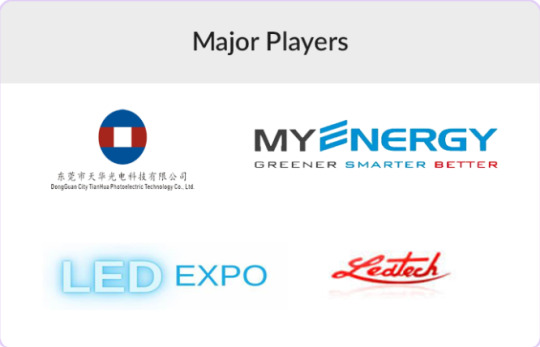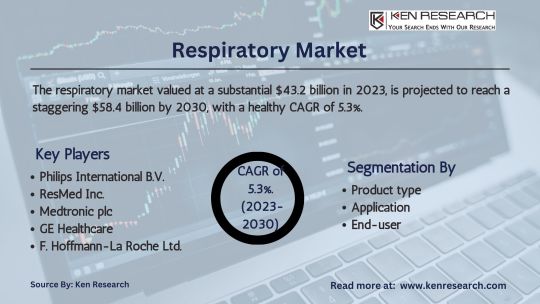#Growth sector analysis
Explore tagged Tumblr posts
Text
Unleashing Potential: Emerging Industries in the U.S. Market
Dive into the future of business with our blog on emerging industries in the U.S. Unleash potential opportunities, navigate trends, and stay ahead in dynamic market landscapes.
#Emerging U.S. industries#Business potential exploration#Market trends analysis#Untapped opportunities#Industry growth prospects#Future business landscapes#U.S. market dynamics#Niche market exploration#Strategic business opportunities#Evolving industry trends#Market potential discovery#Growth sector analysis#Innovation landscape exploration#Market entry strategies#Business development in the U.S.#Sustainable industry sectors#Untapped business prospects#Dynamic market opportunities#Future industry trends#Market landscape exploration
0 notes
Text
Occidental Petroleum Corporation Stock Price Forecast: What to Expect Over the Next Five Years
Explore Occidental Petroleum Corporation’s operations, financial performance, and stock outlook. Learn how OXY’s strategic initiatives and market position could drive a 12% annual growth in stock price. #Energysector #Oil #gas #Occidental Petroleum #nyse
Occidental Petroleum Corporation (OXY) is a major player in the energy sector, with operations spanning across the United States, the Middle East, and North Africa. Here’s a breakdown of their operations, financials, and stock performance. Continue reading Occidental Petroleum Corporation Stock Price Forecast: What to Expect Over the Next Five Years
#Carbon capture#Energy Sector#Financial performance#Investment#Investment Opportunities#Market outlook#Occidental Petroleum Corporation#Oil and gas#OXY#Stock Analysis#Stock Forecast#Stock Market Insights#Stock Price Forecast#Stock Price Growth#Sustainability
0 notes
Text
#Jio’s Success#Key Factors Behind Jio’s Dominance#Jio Telecom Industry#Jio Success Factors#Telecom Industry Dominance#Jio Business Strategy#Jio Market Leadership#Jio Telecom Success#Telecom Industry Analysis#Jio Competitive Edge#Jio Business Model#Telecom Market Trends#Jio Industry Impact#Jio Growth Strategy#Telecom Sector Leadership
0 notes
Text

GIFT Nifty Indicates Muted Opening; UCO Bank Hikes Lending Rates by 5bps for Certain Tenures
for more details click here
#William J. O'Neil (William O Neil)#CANSLIM#Indian Stock Market#Stock Market Research#Market Outlook#Stock Screener#Stock Watchlists#Chart Pattern#Stock Analysis#Breakout Stocks#Stocks to Watch#Stocks to Buy#Growth Stocks#Stock Investing#Stock Trading#Momentum Investing#IPO Stocks#Fundamental Analysis#Technical Analysis#Stock M#arket Courses#Best Sector To Invest#Top Stock Advisory Services
0 notes
Text
#Challenges in Mattress market#Mattress industry in india#Mattress Market Segmentation#Mattress Industry#Mattress Market Size#Mattress Sector#Mattress Market Major Players#Mattress Market Analysis#Mattress Market Revenue#Mattress Market Growth Rate#Mattress Industry Competitors#Opportunities in Mattress Industry
1 note
·
View note
Text
#telecommunication market size#telecommunications market size#telecommunication industry growth#telecommunication industry analysis#telecommunication industry challenges#telecommunication industry companies#telecommunications industry companies#top 10 telecommunication companies in the world#top ten telecommunication companies in the world#telecommunication sector#telecommunications industry#telecommunications and networking industry research reports#telecommunications and networking market research reports#telecommunications and networking market#telecommunications and networking market revenue#telecommunications and networking market share#telecommunications and networking market growth#telecommunications and networking market challenges#telecommunications and networking market trends#telecommunications and networking market size#telecommunications and networking industry#telecommunications and networking market companies#telecommunications and networking market future outlook#telecommunications and networking market top players#networking market#networking market research reports#global networking market#global networking market reports
0 notes
Text
General Healthcare Industry Growth, Companies, and Future Outlook
The General Healthcare industry is a vast and multifaceted sector that encompasses a wide range of products, services, and technologies aimed at promoting overall well-being and addressing the medical needs of individuals. From traditional healthcare services to cutting-edge digital solutions, this industry is continuously evolving to meet the changing demands of patients, healthcare providers, and regulatory bodies.
General Healthcare Market Size and Growth
The global General Healthcare market was valued at an estimated USD 8.45 trillion in 2023 and is projected to reach USD 11.67 trillion by 2028, growing at a CAGR of 6.7%. This growth is driven by factors such as the aging population, the rise of chronic diseases, advancements in medical technology, and the increasing emphasis on preventive healthcare.

Trends Shaping the General Healthcare Industry
Personalized and Precision Medicine: The industry is moving towards a more personalized approach to healthcare, leveraging genetic information, biomarkers, and advanced analytics to tailor treatments and interventions to individual patient needs.
Digital Transformation: The adoption of digital technologies, such as telemedicine, remote patient monitoring, and artificial intelligence, is revolutionizing the way healthcare services are delivered, improving access, efficiency, and patient outcomes.
Focus on Preventive Care: There is a growing emphasis on preventive healthcare measures, including early disease detection, lifestyle modifications, and health education, to reduce the burden of chronic diseases and promote overall well-being.
General Healthcare Industry Challenges
Cost Containment: Controlling healthcare costs while ensuring access to quality care remains a significant challenge, particularly in the face of rising costs of medical technologies, pharmaceuticals, and labor.
Workforce Shortages: Many countries face shortages of healthcare professionals, including physicians, nurses, and allied health workers, which can impact the delivery of healthcare services and patient outcomes.
Regulatory Complexities: Navigating the complex regulatory landscape, which varies across different regions and countries, can be a significant challenge for healthcare organizations, requiring compliance with various laws, guidelines, and standards.
General Healthcare Market Opportunities
Expansion into Emerging Markets: Developing countries present significant growth opportunities for the General Healthcare industry, as they work to improve access to healthcare services and address the needs of underserved populations.
Leveraging Technological Advancements: Embracing innovative technologies, such as artificial intelligence, blockchain, and virtual reality, can help healthcare organizations improve patient outcomes, streamline operations, and enhance the overall patient experience.
Integrated Care Models: The development of integrated care models, which coordinate care across different healthcare settings and providers, can enhance patient experiences and improve overall healthcare outcomes.

Visit this Link: General Healthcare Market
General Healthcare Industry Top Players
Key players in the General Healthcare market include multinational pharmaceutical companies, medical device manufacturers, healthcare service providers, and technology-driven healthcare solutions companies. These industry leaders are known for their expertise, innovative offerings, and commitment to advancing the healthcare sector.
General Healthcare Market Future Outlook
As the General Healthcare industry continues to evolve, the focus on personalized and precision medicine, digital transformation, and preventive care will shape the future landscape of this dynamic sector. Addressing cost challenges, workforce shortages, and regulatory complexities, while capitalizing on emerging opportunities, will be crucial for healthcare organizations to deliver high-quality, accessible, and sustainable care.
FAQs
What is the current size of the global General Healthcare market? The global General Healthcare market was valued at an estimated USD 8.45 trillion in 2023 and is projected to reach USD 11.67 trillion by 2028, growing at a CAGR of 6.7%.
What are the key trends shaping the General Healthcare industry? The key trends shaping the General Healthcare industry include the shift towards personalized and precision medicine, digital transformation, and the focus on preventive and holistic care.
What are the major challenges faced by the General Healthcare industry? The General Healthcare industry faces challenges such as cost containment, workforce shortages, and navigating the complex regulatory landscape.
What opportunities exist in the General Healthcare market? Opportunities in the General Healthcare market include expansion into emerging markets, leveraging technological advancements, and developing integrated care models.
Who are the leading players in the General Healthcare industry. The key players in the General Healthcare market include multinational pharmaceutical companies, medical device manufacturers, healthcare service providers, and technology-driven healthcare solutions companies.
#General Healthcare Market#general healthcare Industry#General Healthcare Sector#General Healthcare Market Outlook#General Healthcare Market Size#General Healthcare Market Research Report#General Healthcare Market Report#General Healthcare Market Research#General Healthcare Industry Research Report#General Healthcare Market Share#General Healthcare Market Growth#General Healthcare Market Revenue#General Healthcare Market Trends#General Healthcare Market Analysis#General Healthcare Market opportunities#General Healthcare Market Challenges#General Healthcare Industry Players#General Healthcare Market Top Companies#General Healthcare Market Future Outlook
0 notes
Text
Technology Stocks Analysis: Spotlight on Indian Companies
What are your top questions about investing in tech stocks? Share your thoughts below!
Spotlight on Indian Technology Stocks: A Guide for Investors Investing in the Future: A Guide to Technology Stocks Analysis May 2024 The technology sector is dynamic, rapidly evolving, and plays a pivotal role in modern economies. As an investor, understanding the potential of technology stocks is crucial for making informed investment decisions. Analyzing Growth Potential and Investment…

View On WordPress
#Financial Analysis#growth potential#Indian tech industry#investment strategies#portfolio diversification#Risk Management#tech sector analysis#tech stocks India#technology stocks analysis
0 notes
Text
Australia $1.14 Billion LED Lighting Market Size, Opportunities And Key Segments
The Australia LED lighting market, valued at USD 1.14 billion in 2024, is a significant component of the global lighting industry. With a projected compound annual growth rate (CAGR) of 8.6% from 2024 to 2032, the sector is expected to reach USD 2.43 billion by the end of the forecast period(2024-2032).
Australia Lighting Market key players

Here are some of the key players in the Australia Led Lighting Market
Signify N.V. (Philips):A Dutch multinational known for its Philips brand of lighting products. They are a leader in general lighting, automotive lighting, and UV disinfection lighting.
Osram Pty Limited:A German multinational that designs and manufactures lighting products, including LED lamps, luminaires, and optoelectronic semiconductors.
Crompton Lighting:An Australia company that designs, manufactures, and distributes lighting solutions for residential, commercial, and industrial applications.
Sylvania Schreder:A French multinational company that specializes in outdoor lighting solutions, including streetlights, floodlights, and area lighting.
Thorn Lighting: An Australia manufacturer of commercial and industrial lighting solutions.
Havit Lighting: An Australia manufacturer of LED lighting solutions for commercial and industrial applications.
Mirabelle International: An Australia company that designs, manufactures, and distributes lighting solutions for a variety of applications, including commercial, residential, and industrial.
Aqualuma LED Lighting: An Australia company that specializes in LED lighting solutions for aquatic applications.
Haneco Lighting Australia Pty Ltd.: An Australia company that distributes lighting products from a variety of manufacturers.
BOSCO Lighting: A Chinese company that manufactures a wide range of lighting products, including LED lighting, solar lighting, and outdoor lighting market
Opportunities in Lighting market
LED Technology Adoption
Energy Efficiency: LED lights consume significantly less power compared to traditional lighting solutions, offering substantial energy savings.
Longevity: LEDs have a longer lifespan, reducing replacement frequency and maintenance costs.
Smart Lighting Systems
Automation and Control: Integration with home and building management systems allows for automated control, enhancing convenience and energy efficiency.
Customization: Smart lighting solutions enable users to adjust lighting based on time of day, presence, or activity, enhancing user experience and further saving energy.
Growth in Green Building Initiatives
Regulatory Support: Increased environmental regulations are pushing more buildings to adopt eco-friendly lighting solutions.
Certification Programs: Programs like LEED and BREEAM encourage the adoption of sustainable lighting technologies to gain points towards building certification.
Advancements in Lighting for Health and Wellbeing
Human-Centric Lighting: Developments in lighting that adjust to human circadian rhythms can enhance wellbeing, productivity, and health.
UV Disinfection: The COVID-19 pandemic has spurred interest in UV-C lighting solutions for disinfecting surfaces and air in public spaces, hospitals, and homes.
Expansion of Industrial and Commercial Applications
Industrial Spaces: High-bay LEDs for warehouses and manufacturing facilities can reduce costs and improve safety by providing better quality light.
Retail and Hospitality: Advanced lighting systems can enhance customer experiences and drive sales, with dynamic lighting that adapts to the time of day or the mood of an event.
You can also read about:- Australia LED Lighting Market Analysis And Segmentation, Industry Key Players
Key Segments In Australia LED Lighting Market

By Type of LEDs
Luminaires
Lamps
By Usage of LEDs
Indoor
Outdoor
Street Lighting
Building Exteriors/ Façade Lighting
Parking Lots and Garages
Others
By End User Sector
Commercial
Residential
Industrial
Healthcare
Hospitality
By Type of Sales
Project
Retail
Companies Covered
LEDEXPO Australia
Ledtec
MyEnergy Group
Dongguan City Tianhua Photoelectric Technology Co Ltd
Jiangsu ChuangXu Optoelectronics Technology Co., Ltd.
Shenzhen Guangshezhaoming Technology Co., Ltd
Ningbo ALVA Electric Appliance Co., Ltd.
Zhejiang Danse Electronic Technology Co., Ltd.
You can also read about:- Exploring India's Lighting Market Size, Trends and Future Outlook
Conclusion
The Australia LED lighting market is set for dynamic growth, driven by technological innovation, regulatory support, and increasing market demand across various sectors. As we move towards 2032, the industry looks to embrace more sustainable and efficient practices, heralding a bright future for LED lighting in Australia.
#Australia LED Lighting Market#Australia LED Lighting Sector#Australia LED Lighting Industry#Australia LED Lighting Market Size#Australia LED Lighting Trends#Australia LED Lighting Market Report#Lighting Market Analysis#Lighting Market Revenue#Lighting Market Growth Rate#Lighting Industry Competitors
1 note
·
View note
Text
Assessing the Future of Cold Pressed Juice Market: Trends and Market Analysis

The Cold Pressed juice market offers a range of vibrant, nutrient-rich beverages extracted without heat, preserving enzymes and nutrients. Embraced for their health benefits, these juices cater to wellness-conscious consumers seeking natural refreshment. With diverse flavors and organic options, Cold Pressed juices continue to captivate health-minded individuals worldwide.
#Juice Sector#Juice Market Size#Juice Industry Competitors#Opportunities in Juice Industry#Juice Market Future Outlook#Challenges in Juice market#Juice Market Segmentation#Top Players in Juice Market#Juice Market Trends#Juice Market Report#Juice Market Forecast#Juice Market Major Players#Juice Market Analysis#Juice Market Revenue#Juice Market Growth Rate#fruit juice market#Juices market
0 notes
Text
Breathing New Life: Exploring the $43.2 Billion Respiratory Market

Discover the $43.2 billion respiratory market, analyzing its revenue, growth rate, size, and segmentation. Explore therapeutic devices, care equipment, and accessories driving growth in this vital healthcare sector.
#Respiratory Market#Respiratory Industry#Respiratory Sector#Respiratory Market Analysis#Respiratory Market Revenue#Respiratory Market Growth Rate#Respiratory Market Size#Respiratory Market Segmentation#Respiratory Care Devices Market#Respiratory Devices Market#Therapeutic Respiratory Devices Market#Respiratory device accessories market#Respiratory Care Equipment Market#Respiratory diagnostics market#Respiratory measurement devices market#growth of Respiratory industry#Respiratory Industry Competitors#Opportunities in Respiratory Industry
0 notes
Text
Kinder Morgan Stock Price Forecast: Long-Term Investment Potential
Over the long term, KMI’s stock has the potential to appreciate by approximately 15%, making it an attractive option for investors. #KinderMorgan #EnergyInfrastructure #StockMarket #FinancialHealth #DividendStocks #EnergySector #stockpriceforecast
Kinder Morgan, Inc. (KMI) is one of the largest energy infrastructure companies in North America. The company operates approximately 83 000 miles of pipelines and 141 terminals. These assets transport natural gas, refined petroleum products, crude oil, carbon dioxide (CO2), and more. Kinder Morgan’s extensive network plays a crucial role in the energy supply chain, ensuring the efficient and safe…
#Dividend Stocks#Energy Infrastructure#Energy Sector#Investment#Kinder Morgan#KMI#Long-term investment#NYSE#Stock Forecast#Stock market#Stock market analysis#Stock Price Forecast#Stock Price Growth
0 notes
Text
Marketing strategy of Reliance Jio

Reliance Jio has dramatically transformed the telecom industry in India and extended its influence globally. Here’s a deeper look into the strategic elements that have fueled Jio’s remarkable success:
1. Disruptive Pricing Strategy: Making Connectivity Affordable
Jio’s entry into the telecom market was marked by its groundbreaking pricing strategy. By offering extremely low data rates and free voice calls, Jio disrupted traditional pricing models and set a new benchmark for affordability. This aggressive pricing approach not only attracted a massive number of subscribers but also forced competitors to rethink their pricing structures, accelerating the adoption of data services across India.
2. Infrastructure Investment: Building a Robust Network
A cornerstone of Jio’s strategy was its substantial investment in infrastructure. Jio built a state-of-the-art 4G LTE network from the ground up, complemented by an extensive fiber-optic backbone. This investment facilitated widespread coverage and high-speed internet access, even in remote and underserved areas. The robust network infrastructure was key to Jio’s ability to deliver consistent and reliable service, which in turn drove its rapid market penetration.
3. Digital Ecosystem Integration: Offering More Than Telecom
Jio’s vision extended beyond just providing telecommunications services. The company developed a comprehensive digital ecosystem that includes JioMart for online shopping, JioSaavn for music streaming, and JioTV for entertainment. This integration of various services not only provided added value to customers but also fostered increased engagement and loyalty. By creating a one-stop digital platform, Jio enhanced its appeal and solidified its presence in the consumer’s digital life.
4. Innovative Technology Adoption: Embracing Future Trends
Jio has consistently embraced cutting-edge technologies to stay ahead of the curve. The early adoption of VoLTE (Voice over LTE) technology allowed Jio to offer superior voice quality and efficient data usage. Additionally, Jio has been at the forefront of advancements in digital services, continuously evolving its offerings to enhance the customer experience. This commitment to innovation has positioned Jio as a leader in digital transformation.
5. Aggressive Marketing and Partnerships: Driving Brand Visibility
Jio’s marketing strategies and partnerships have significantly amplified its brand presence. The company has executed high-impact marketing campaigns and forged collaborations with device manufacturers to ensure its services reach a broad audience. Promotional offers and strategic tie-ups have played a crucial role in attracting and retaining subscribers, reinforcing Jio’s position as a dominant player in the telecom sector.
Conclusion
Reliance Jio’s success is a compelling example of strategic innovation and market disruption. By leveraging disruptive pricing, investing in cutting-edge infrastructure, integrating a diverse digital ecosystem, adopting advanced technologies, and executing aggressive marketing strategies, Jio has not only redefined the telecom industry but also set new standards for digital connectivity and consumer engagement. Its approach serves as a model for industry transformation and highlights the power of strategic foresight in achieving remarkable growth.
READ MORE
#Jio Business Strategy#Jio Market Leadership#Jio Telecom Success#Telecom Industry Analysis#Jio Competitive Edge#Jio Business Model#Telecom Market Trends#Jio Industry Impact#Jio Growth Strategy#Telecom Sector Leadership#business
0 notes
Text

GIFT Nifty Indicates Positive Opening; Hindustan Petroleum to Invest Rs 2,212 Crore in Raipur Pipeline Project
More details visit here
#William J. O'Neil (William O Neil)#CANSLIM#Indian Stock Market#Stock Market Research#Market Outlook#Stock Screener#Stock Watchlists#Chart Pattern#Stock Analysis#Breakout Stocks#Stocks to Watch#Stocks to Buy#Growth Stocks#Stock Investing#Stock Trading#Momentum Investing#IPO Stocks#Fundamental Analysis#Technical Analysis#Stock M#arket Courses#Best Sector To Invest#Top Stock Advisory Services
0 notes
Text
Kitchenware Industry Analysis: Major Players and Market Segmentation

Navigate the Kitchenware Industry landscape with an insightful report, dissecting major players' roles and market segmentation. Understand the dynamics shaping the industry for informed decision-making.
#Kitchenware Market#Kitchenware Industry#Kitchenware Sector#Kitchenware Market Major Players#Kitchenware Market Analysis#Kitchenware Market Revenue#Kitchenware Market Growth Rate#Kitchenware Market Size#Kitchenware Market Outlook#Kitchenware Market Future#Kitchenware Market Segmentation#Kitchenware Market Trends#Kitchenware Market Report#Kitchenware Market Forecast#Kitchenware Market Research Report
0 notes
Text
Breaking Down the Dominant Players in the Communication Industry for 2024
The communication industry has evolved significantly over the past decade, with technological advancements and changing consumer behaviors driving this transformation. From traditional telecommunications to modern digital communication platforms, several key players have emerged as leaders in this dynamic industry. This article will highlight the top players in the communication industry and provide updated statistics to showcase their influence and reach.
1. AT&T Inc.
Overview
AT&T Inc. is a global leader in telecommunications, media, and technology services. Established in 1983, AT&T has consistently been at the forefront of the communication industry, offering a wide range of services including wireless communications, broadband, and digital entertainment.
Latest Stats
Revenue (2023): $181.2 billion
Number of Employees: 203,000
Subscribers: Over 182 million wireless subscribers globally
2. Verizon Communications Inc.
Overview
Verizon Communications Inc., founded in 2000, is a leading provider of wireless, fiber-optic, and global information networks. Verizon is known for its high-quality network services and extensive coverage.
Latest Stats
Revenue (2023): $137.1 billion
Number of Employees: 117,100
Subscribers: Approximately 143 million wireless connections
3. Comcast Corporation
Overview
Comcast Corporation is a major player in media, entertainment, and communication services. Founded in 1963, Comcast operates through various segments including cable communications, media, and studios.
Latest Stats
Revenue (2023): $121.4 billion
Number of Employees: 189,000
Subscribers: 32 million internet customers, 20 million video customers
4. T-Mobile US, Inc.
Overview
T-Mobile US, Inc., a subsidiary of Deutsche Telekom AG, is renowned for its innovative approaches to wireless communication. T-Mobile has grown rapidly, especially after its merger with Sprint in 2020.
Latest Stats
Revenue (2023): $80.1 billion
Number of Employees: 75,000
Subscribers: Over 113 million total customers
5. Cisco Systems, Inc.
Overview
Cisco Systems, Inc. is a global leader in networking hardware, telecommunications equipment, and high-technology services and products. Founded in 1984, Cisco has been pivotal in driving the digital transformation of communication networks.
Latest Stats
Revenue (2023): $52.3 billion
Number of Employees: 83,300
Market Share: Leading position in enterprise networking with over 50% market share
6. Meta Platforms, Inc. (formerly Facebook)
Overview
Meta Platforms, Inc. has revolutionized digital communication through its social media platforms, including Facebook, Instagram, and WhatsApp. Meta continues to expand its influence in virtual and augmented reality.
Latest Stats
Revenue (2023): $117.9 billion
Number of Employees: 86,482
Active Users: 2.96 billion monthly active users on Facebook
7. Zoom Video Communications, Inc.
Overview
Zoom Video Communications, Inc. became a household name during the COVID-19 pandemic, providing essential video conferencing services. Founded in 2011, Zoom has quickly become a leader in virtual communication.
Latest Stats
Revenue (2023): $4.39 billion
Number of Employees: 6,300
Users: Over 300 million daily meeting participants
Conclusion
The communication industry is dominated by a diverse group of companies, each contributing uniquely to the global communication landscape. From traditional telecom giants like AT&T and Verizon to digital disruptors like Meta and Zoom, these companies are shaping the future of how we connect and communicate. The continuous evolution of technology and consumer demands ensures that the industry remains dynamic, with these top players leading the charge in innovation and service delivery. As the industry grows, staying updated with the latest statistics and trends will be crucial for understanding the ever-changing landscape of communication.
#telecommunication market size#telecommunications market size#telecommunication industry growth#telecommunication industry analysis#telecommunication industry challenges#telecommunication industry companies#telecommunications industry companies#top 10 telecommunication companies in the world#top ten telecommunication companies in the world#telecommunication sector#telecommunications industry#telecommunications and networking industry research reports#telecommunications and networking market research reports#telecommunications and networking market#telecommunications and networking market revenue#telecommunications and networking market share#telecommunications and networking market growth#telecommunications and networking market challenges#telecommunications and networking market trends#telecommunications and networking market size#telecommunications and networking industry#telecommunications and networking market companies#telecommunications and networking market future outlook#telecommunications and networking market top players#networking market#networking market research reports#global networking market#global networking market reports
0 notes